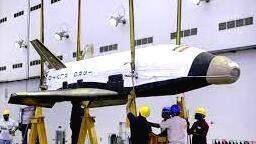

THIRUVANANTHAPURAM: The ISRO is gearing up for the first runway landing experiment of its Reusable Launch Vehicle. Usually, the rockets either burn up or are left in space after launching satellites into space. Experiments to modify the rocket structure to make it reusable are in the final stage. The ISRO had earlier succeeded in landing its Reusable Launch Vehicle in the sea. The second phase of this is the landing test on the runway. If this experiment turns out to be a success, India will become a country with reusable rockets. Countries such as the United States, Russia, and China have partially or fully reusable launch vehicles. The rocket's reusability could lead to substantial financial gains in commercial launches. Launch costs will be reduced by a quarter.
The runway landing experiment will be conducted at Aeronautical Test Range, Chitradurga district in Karnataka. The RLV wing body will be carried using a helicopter to an altitude of three to five km and released at a distance of about four to five km ahead of the runway with a horizontal velocity. After the release, the RLV will glide, navigate towards the runway and land autonomously with a landing gear in the defence airfield near Chitradurga. Sources in the national space agency headquartered here earlier said new systems like landing gear, parachute, hook beam assembly, radar altimeter and pseudolite have been developed and qualified.
ISRO Chairman Dr S Somnath said that the adverse weather conditions are posing a challenge. The experiment will be conducted when the weather, including wind direction, becomes favourable.